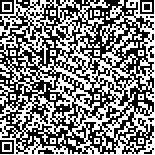| 摘要: |
| [摘要] 目的 观察右美托咪定联合氯胺酮用于小儿眼科手术的安全性及麻醉效果。方法 选择90例2~7岁行眼科手术的患儿,随机分为三组,每组30例。A组使用氯胺酮联合右美托咪定麻醉,B组使用氯胺酮联合咪唑安定麻醉,C组单纯使用氯胺酮麻醉。记录麻醉前(T0)、肌注氯胺酮后5 min(T1)、手术开始时(T2)、手术开始后5 min(T3)、手术开始后15 min(T4)及手术结束时(T5)的收缩压(SBP)、舒张压(DBP)、心率(HR)、血氧饱和度(SpO2),并记录三组患儿氯胺酮总用量及术中不良反应,观察术后苏醒时间、苏醒期躁动发生情况。结果 A组与C组比较,T1、T3、T5的SBP和T5的DBP差异有统计学意义(P<0.05)。A组HR在T5时点与B、C两组比较差异有统计学意义(P<0.05)。A、B两组氯胺酮总用量和术中不良反应发生例数与C组比较差异有统计学意义(P<0.05)。A、B两组苏醒时间、苏醒期躁动发生例数均少于C组,而A组明显优于B组(P<0.05)。结论 右美托咪定联合氯胺酮用于小儿眼科手术麻醉是安全的,且术中血流动力学平稳,不良反应少,术后苏醒时间短,苏醒期躁动发生例数减少。 |
| 关键词: 右美托咪定 氯胺酮 小儿 眼科手术 |
| DOI:10.3969/j.issn.1674-3806.2014.01.14 |
| 分类号:R 726.1 |
| 基金项目: |
|
| Clinical observation of dexmedetomidine combined with ketamine in pediatric ophthalmic surgery |
|
ZHU Cheng-yun
|
|
Department of Anesthesiology, Gangbei District People′s Hospital of Guigang,Guangxi 537100,China
|
| Abstract: |
| [Abstract] Objective To observe the safety and anesthetic effect of dexmedetomidine combined with ketamine in pediatric ophthalmic surgery.Methods Ninety children aged 2~7 years received ophthalmic surgery were randomly divided into 3 groups(30 cases in each group):group A: ketamine combined with dexmedetomidine;group B: ketamine and midazolam;group C:ketamine.The tested indexes were recorded before anesthesia(T0), at 5 min after intramuscular injection of ketamine(T1), at operation beginning(T2), at 5 min after operation beginning(T3), at 15 min after operation beginning(T4) and at the end of operation(T5) of SBP, DBP, HR, SpO2. The total dosage and the occurrence of adverse reactions of with ketamine were recorded. The postoperative recovery time and agitation occurrence were observed.Results Between group A and group C, there were significant differences in SBP at T1, T3, T5 and in DBP at T5(P<0.05). Between group A and group B, group C there was statistically significant differences in HR at T5(P<0.05). The total dosage of ketamine and the number of cases of adverse reactions in group A and group B were different from those in group C(P<0.05). The recovery time in group A and group B were less than those in group C with a significant difference between group A and group C(P<0.05). The incidence of agitation in group A was lower than those group B and group C(P<0.05).Conclusion Anesthesia of dexmedetomidine combined with ketamine for pediatric ophthalmic surgery is safe, and has the advantages of stable hemodynamic state, less adverse reactions, lower incidence of postoperative agitation. |
| Key words: Dexmedetomidine Ketamine Children Ophthalmology surgery |

